Maven 安装 与 使用
下载地址:http://maven.apache.org/download.cgi

下载完成后,配置环境变量 (前提 已经安装JDK )后才能使用。

进入 bin 目录

复制 路径
添加到环境变量中(在Path中添加)
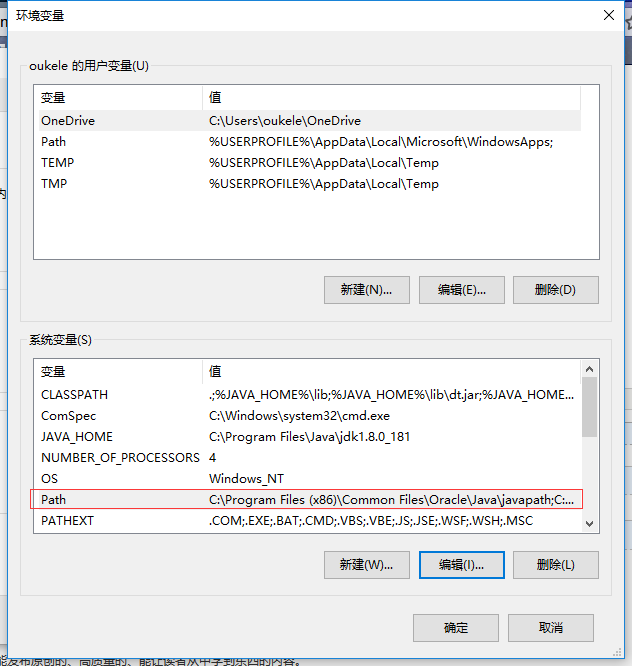
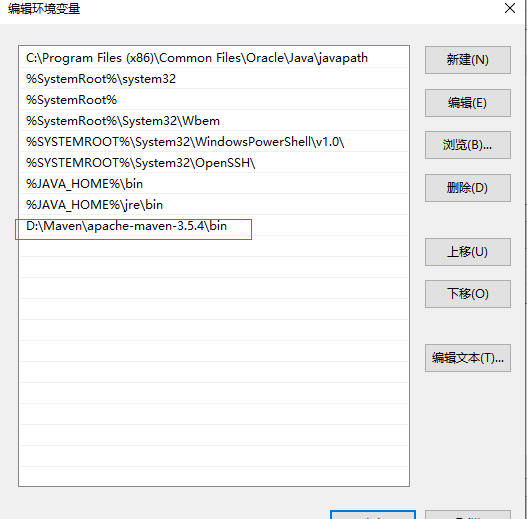
添加完成。
win + r 输入 cmd 回车
输入 mvn -v(查看版本信息)

仓储配置(要修改一下仓储的位置)
默认地址位于 C:\Users\用户名.m2 目录下
打开maven安装目录,打开conf目录下的setting.xml文件
指定一个仓储路径给它:

也可以运行的时候指定仓储位置:
mvn clean install -Dmaven.repo.local = 存储的位置
修改默认中央仓库地址:
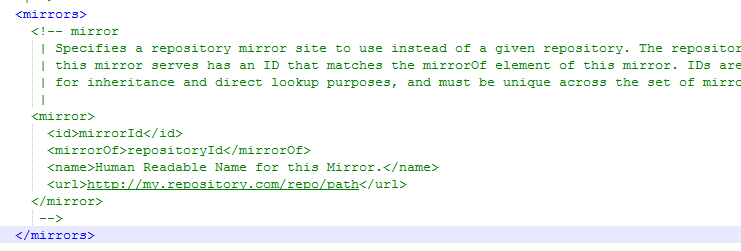
我们这里引用阿里云的地址。 (因为它的下载速度比较快)

完整的配置文件:
<?xml version="1.0" encoding="UTF-8"?> <!--
Licensed to the Apache Software Foundation (ASF) under one
or more contributor license agreements. See the NOTICE file
distributed with this work for additional information
regarding copyright ownership. The ASF licenses this file
to you under the Apache License, Version 2.0 (the
"License"); you may not use this file except in compliance
with the License. You may obtain a copy of the License at http://www.apache.org/licenses/LICENSE-2.0 Unless required by applicable law or agreed to in writing,
software distributed under the License is distributed on an
"AS IS" BASIS, WITHOUT WARRANTIES OR CONDITIONS OF ANY
KIND, either express or implied. See the License for the
specific language governing permissions and limitations
under the License.
--> <!--
| This is the configuration file for Maven. It can be specified at two levels:
|
| 1. User Level. This settings.xml file provides configuration for a single user,
| and is normally provided in ${user.home}/.m2/settings.xml.
|
| NOTE: This location can be overridden with the CLI option:
|
| -s /path/to/user/settings.xml
|
| 2. Global Level. This settings.xml file provides configuration for all Maven
| users on a machine (assuming they're all using the same Maven
| installation). It's normally provided in
| ${maven.conf}/settings.xml.
|
| NOTE: This location can be overridden with the CLI option:
|
| -gs /path/to/global/settings.xml
|
| The sections in this sample file are intended to give you a running start at
| getting the most out of your Maven installation. Where appropriate, the default
| values (values used when the setting is not specified) are provided.
|
|-->
<settings xmlns="http://maven.apache.org/SETTINGS/1.0.0"
xmlns:xsi="http://www.w3.org/2001/XMLSchema-instance"
xsi:schemaLocation="http://maven.apache.org/SETTINGS/1.0.0 http://maven.apache.org/xsd/settings-1.0.0.xsd">
<!-- localRepository
| The path to the local repository maven will use to store artifacts.
|
| Default: ${user.home}/.m2/repository
<localRepository>/path/to/local/repo</localRepository>
-->
<localRepository>D:\MavenInstaFiles\repository </localRepository> <!-- interactiveMode
| This will determine whether maven prompts you when it needs input. If set to false,
| maven will use a sensible default value, perhaps based on some other setting, for
| the parameter in question.
|
| Default: true
<interactiveMode>true</interactiveMode>
--> <!-- offline
| Determines whether maven should attempt to connect to the network when executing a build.
| This will have an effect on artifact downloads, artifact deployment, and others.
|
| Default: false
<offline>false</offline>
--> <!-- pluginGroups
| This is a list of additional group identifiers that will be searched when resolving plugins by their prefix, i.e.
| when invoking a command line like "mvn prefix:goal". Maven will automatically add the group identifiers
| "org.apache.maven.plugins" and "org.codehaus.mojo" if these are not already contained in the list.
|-->
<pluginGroups>
<!-- pluginGroup
| Specifies a further group identifier to use for plugin lookup.
<pluginGroup>com.your.plugins</pluginGroup>
-->
</pluginGroups> <!-- proxies
| This is a list of proxies which can be used on this machine to connect to the network.
| Unless otherwise specified (by system property or command-line switch), the first proxy
| specification in this list marked as active will be used.
|-->
<proxies>
<!-- proxy
| Specification for one proxy, to be used in connecting to the network.
|
<proxy>
<id>optional</id>
<active>true</active>
<protocol>http</protocol>
<username>proxyuser</username>
<password>proxypass</password>
<host>proxy.host.net</host>
<port>80</port>
<nonProxyHosts>local.net|some.host.com</nonProxyHosts>
</proxy>
-->
</proxies> <!-- servers
| This is a list of authentication profiles, keyed by the server-id used within the system.
| Authentication profiles can be used whenever maven must make a connection to a remote server.
|-->
<servers>
<!-- server
| Specifies the authentication information to use when connecting to a particular server, identified by
| a unique name within the system (referred to by the 'id' attribute below).
|
| NOTE: You should either specify username/password OR privateKey/passphrase, since these pairings are
| used together.
|
<server>
<id>deploymentRepo</id>
<username>repouser</username>
<password>repopwd</password>
</server>
--> <!-- Another sample, using keys to authenticate.
<server>
<id>siteServer</id>
<privateKey>/path/to/private/key</privateKey>
<passphrase>optional; leave empty if not used.</passphrase>
</server>
-->
</servers> <!-- mirrors
| This is a list of mirrors to be used in downloading artifacts from remote repositories.
|
| It works like this: a POM may declare a repository to use in resolving certain artifacts.
| However, this repository may have problems with heavy traffic at times, so people have mirrored
| it to several places.
|
| That repository definition will have a unique id, so we can create a mirror reference for that
| repository, to be used as an alternate download site. The mirror site will be the preferred
| server for that repository.
|-->
<mirrors>
<!-- mirror
| Specifies a repository mirror site to use instead of a given repository. The repository that
| this mirror serves has an ID that matches the mirrorOf element of this mirror. IDs are used
| for inheritance and direct lookup purposes, and must be unique across the set of mirrors.
|
<mirror>
<id>mirrorId</id>
<mirrorOf>repositoryId</mirrorOf>
<name>Human Readable Name for this Mirror.</name>
<url>http://my.repository.com/repo/path</url>
</mirror>
-->
<mirror>
<id>nexus-aliyun</id>
<mirrorOf>*</mirrorOf>
<name>Nexus aliyun</name>
<url>http://maven.aliyun.com/nexus/content/groups/public</url>
</mirror> </mirrors> <!-- profiles
| This is a list of profiles which can be activated in a variety of ways, and which can modify
| the build process. Profiles provided in the settings.xml are intended to provide local machine-
| specific paths and repository locations which allow the build to work in the local environment.
|
| For example, if you have an integration testing plugin - like cactus - that needs to know where
| your Tomcat instance is installed, you can provide a variable here such that the variable is
| dereferenced during the build process to configure the cactus plugin.
|
| As noted above, profiles can be activated in a variety of ways. One way - the activeProfiles
| section of this document (settings.xml) - will be discussed later. Another way essentially
| relies on the detection of a system property, either matching a particular value for the property,
| or merely testing its existence. Profiles can also be activated by JDK version prefix, where a
| value of '1.4' might activate a profile when the build is executed on a JDK version of '1.4.2_07'.
| Finally, the list of active profiles can be specified directly from the command line.
|
| NOTE: For profiles defined in the settings.xml, you are restricted to specifying only artifact
| repositories, plugin repositories, and free-form properties to be used as configuration
| variables for plugins in the POM.
|
|-->
<profiles>
<!-- profile
| Specifies a set of introductions to the build process, to be activated using one or more of the
| mechanisms described above. For inheritance purposes, and to activate profiles via <activatedProfiles/>
| or the command line, profiles have to have an ID that is unique.
|
| An encouraged best practice for profile identification is to use a consistent naming convention
| for profiles, such as 'env-dev', 'env-test', 'env-production', 'user-jdcasey', 'user-brett', etc.
| This will make it more intuitive to understand what the set of introduced profiles is attempting
| to accomplish, particularly when you only have a list of profile id's for debug.
|
| This profile example uses the JDK version to trigger activation, and provides a JDK-specific repo.
<profile>
<id>jdk-1.4</id> <activation>
<jdk>1.4</jdk>
</activation> <repositories>
<repository>
<id>jdk14</id>
<name>Repository for JDK 1.4 builds</name>
<url>http://www.myhost.com/maven/jdk14</url>
<layout>default</layout>
<snapshotPolicy>always</snapshotPolicy>
</repository>
</repositories>
</profile>
--> <!--
| Here is another profile, activated by the system property 'target-env' with a value of 'dev',
| which provides a specific path to the Tomcat instance. To use this, your plugin configuration
| might hypothetically look like:
|
| ...
| <plugin>
| <groupId>org.myco.myplugins</groupId>
| <artifactId>myplugin</artifactId>
|
| <configuration>
| <tomcatLocation>${tomcatPath}</tomcatLocation>
| </configuration>
| </plugin>
| ...
|
| NOTE: If you just wanted to inject this configuration whenever someone set 'target-env' to
| anything, you could just leave off the <value/> inside the activation-property.
|
<profile>
<id>env-dev</id> <activation>
<property>
<name>target-env</name>
<value>dev</value>
</property>
</activation> <properties>
<tomcatPath>/path/to/tomcat/instance</tomcatPath>
</properties>
</profile>
-->
</profiles> <!-- activeProfiles
| List of profiles that are active for all builds.
|
<activeProfiles>
<activeProfile>alwaysActiveProfile</activeProfile>
<activeProfile>anotherAlwaysActiveProfile</activeProfile>
</activeProfiles>
-->
</settings>
开始搭建我们的第一个Maven项目:
命令行创建Maven项目
输入命令 mvn archetype:generate ,回车,根据提示输入参数,如果是第一次使用,需要下载插件,等一下就可以了。
切换目录 输入指令:

选择骨架( 模板 ):
( 这里作为演示我输入 10 )

输入座标:

确认后下载骨架,成功的提示如下:
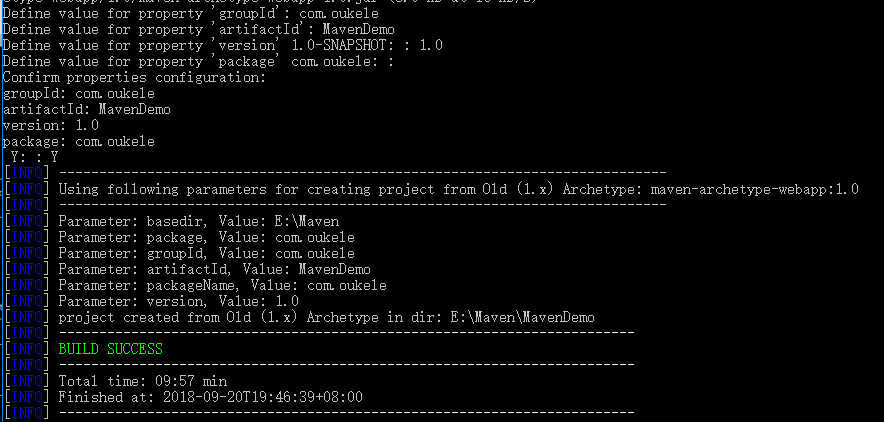
将项目转换成IDEA项目:
切换到 我们 刚刚创建的Maven项目
输入mvn idea:idea 指令 就可以了。

成功后可以看到增加了项目信息:

在IDEA中就可以直接打开项目了。
将项目打包
输入指令:mvn package

打包成功后:
MavenDem目录里会有一个 target目录

这样 打包就完成了。
使用IDEA创建Maven项目:

选择maven项目,指定骨架,作为演示 这里选择的是一个webapp。

点击 Next
然后 填写 组织名 , 项目名 , 版本
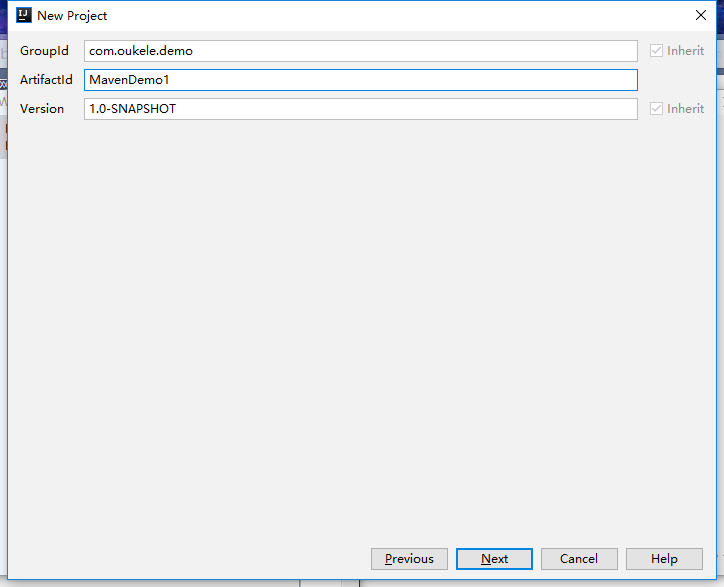
点击Next
因为IDEA内置了Maven,可以选择默认内置的Maven;当然最好是选择自己安装并配置好的环境,让所有的IDE统一:


点击Finish 项目就创建完成了。

完整的项目:
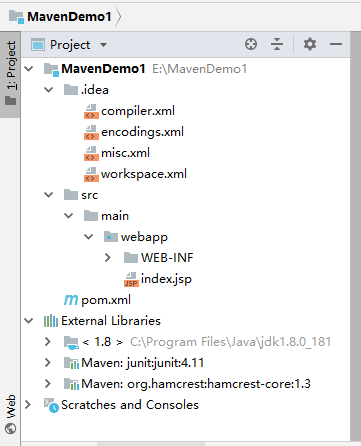
完成了。
Maven 安装 与 使用的更多相关文章
- Maven安装
开发分布式的商场系统,用到了一些新的技术,做一个记录和分享 这里讲一下maven安装 首先什么是Maven Maven作为一个构建工具,不仅帮我们自动化构建,还能抽象构建过程,提供构建任务实现.他跨平 ...
- maven之一:maven安装和eclipse集成
maven作为一个项目构建工具,在开发的过程中很受欢迎,可以帮助管理项目中的bao依赖问题,另外它的很多功能都极大的减少了开发的难度,下面来介绍maven的安装及与eclipse的集成. maven的 ...
- maven安装和配置
一.下载maven maven下载页 里面有一些版本区别,binary比较小,适合直接在项目中使用,source带了源代码,windows系统下载zip后缀的 apache-maven-3.3.9-b ...
- Maven安装与使用
1.安装Maven 1)官网下载Maven : http://maven.apache.org/download.cgi,解压下载文件 2)配置环境变量 3)验证是否已经安装成功:打开cmd,输入mv ...
- maven - 安装与配置
最近在了解maven的相关东西,在网上查了一些资料,现在简单整理一下. 一.maven 安装 1.先检查JDK ,Maven是一个java工具,所以请确保jdk环境已经正确安装在你的机器上. 2.点击 ...
- maven2 com.jhlabs.imaging 01012005 maven安装jar包imaging命令
com.jhlabs:imaging:jar:01012005 所在仓库+captcha验证码maven依赖 maven 安装jar包 到本地仓库 命令maven 3.0安装jar包 到本地仓库 co ...
- [Maven]Maven安装简述
maven安装简述 1检查jdk安装 1.1cmd输入echo %JAVA_HOME%检查JAVA_HOME是否指向了正确的jdk安装目录 1.2cmd输入java-version检查window是否 ...
- maven安装配置
1.到官网下载maven http://maven.apache.org/download.html 2.解压后解压到任意文件路径 本地解压的位置:C:\soft\apache-maven-3.3.9 ...
- Windows下的maven安装及配置
有时候开发需要用到maven来进行项目管理,说下怎么配置maven吧 环境&工具: windows系统 jdk1.8 apache-maven-3.2.5.zip eclipse 首先需要去A ...
- Maven初级学习(一)手把手教你Maven安装
序:学习安装Maven,在Windows和Unix系统上. 一.Windows系统安装MVN 前提正确安装JDK1.5以上的版本 1 下载最先版Mvn http://maven.opache.org/ ...
随机推荐
- 一致性算法—Paxos、Raft、ZAB
一致性算法—Paxos.Raft.ZAB 2019年04月21日 20:35:09 bulingma 阅读数 64更多 分类专栏: 分布式概念 版权声明:本文为博主原创文章,遵循CC 4.0 BY ...
- java正则表达式的使唤
示例代码: package com.target.start; import java.util.regex.Matcher; import java.util.regex.Pattern; /* * ...
- JSONObject 的使用
1. 导入依赖 这里以 20180813 的 json 版本为例 <dependency> <groupId>org.json</groupId> <arti ...
- thymeleaf 模板使用 之 解决因HTML标签未闭合引起的错误
一.修改thymeleaf属性配置 spring.thymeleaf.prefix=classpath:/templates/ spring.thymeleaf.suffix=.html spring ...
- exclipe怎么设置编码为UTF-8
如果要使插件开发应用能有更好的国际化支持,能够最大程度的支持中文输出,则最好使 Java文件使用UTF-8编码.然而,Eclipse工作空间(workspace)的缺省字符编码是操作系统缺省的编码,简 ...
- 客户端相关知识学习(六)之deeplink技术
Deeplink应用描述 Deeplink,简单讲,就是你在手机上点击一个链接之后,可以直接链接到app内部的某个页面,而不是app正常打开时显示的首页.不似web,一个链接就可以直接打开web的内页 ...
- Arduino Nano与SIM800C 通信
首先感谢 原文作者:https://blog.csdn.net/weixin_44481398/article/details/86596933#commentBox 找了好久没有找到,使用他的代码一 ...
- SSIS 初次接触 + 开发记录
第一次接触SSIS,昨天终于把一套流程走通,记一下流水. 1:安装 使用SSIS需要安装插件(VS 和Sql Server都需要另外安装). 自己使用的vs2017开发,官网有专门的 VS2017 安 ...
- go语言入门(2)数据类型
1,命名 Go语言中的函数名.变量名.常量名.类型名.语句标号和包名等所有的命名,都遵循一个简单的命名规则:一个名字必须以一个字母(Unicode字母)或下划线开头,后面可以跟任意数量的字母.数字或下 ...
- vue中移动端滚动事件,点击一次触发了事件两次(better-scroll)
解决办法一: 将button标签换成a标签 问题代码: <span class="submitBtn" @click.stop="replyReport()&quo ...
